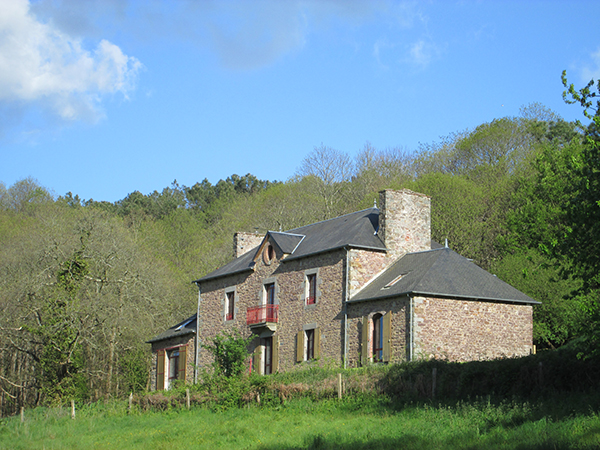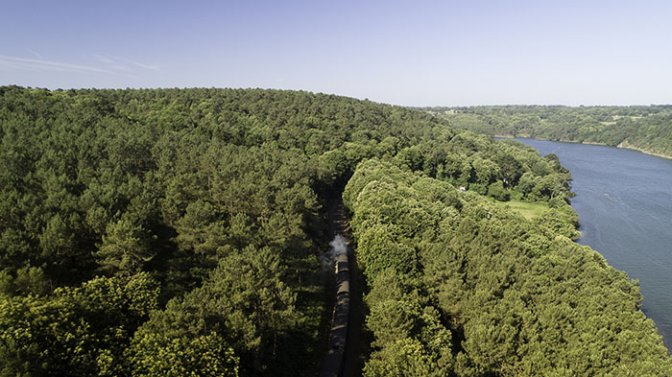House of the estuary

> https://www.guingamp-paimpol-agglo.bzh/se-divertir/sports-et-loisirs/sites-et-maisons-nature
The Trieux
The Trieux is a coastal river of 75 kilometers from the woods of the Coat Malouen abbey in Kerpert, south of Guingamp. its estuary begins at Pontrieux and ends not far from the small port of Loguivy from the sea.
many of the boats that went up the Trieux to deliver their precious cargo of maerl, flaxseed, Bordeaux wines ... the smallest handles, such as Frynaudour or Lancerf were then used to land the amendments. link between Armor and Argoat, the Trieux was also a border between Tregor and Goëlo. several bins were set up to promote exchanges.
that of launchf, cartography since 1776, connected "the passage", commune of Pleudaniel, with Toul ar Huiled. The activity stopped in 1927, resumed during the occupation and finally ceased in 1957.
The oyster deposit at Toul ar Huiled was reputed to be the subject of a publication in the Official Journal in 1889 and a report on the state of the oyster beds in Brittany. The maritime prefect decreed the fishing conditions. Fishing on foot was permitted while boating was practiced only on rowing. the minimum size of the oysters was 5 cm in 1883.
In the nineteenth century the Trieux was polluted by the many routers installed on the slopes (flax industry). Those of Coat Ermit are particularly well preserved.
Leff
Separating in the south Plourivo de Quemper-Guézennec, the Leff is also a strong element of the communal environment. It has its source in the meadows of Beaumanoir castle in Leslay a few kilometers south of Quintin. It is a river of major importance, since the drinking water of the Paimpol region is captured in its flow to Yvias.
Houël is the ultimate point of the rise of the Channel waters in the estuary of Leff. At this point, the valley is encased and wooded. The riverbed is particularly sinuous, reflecting the topographical difficulties encountered before reaching the sea.
More modest than the estuary of the Trieux, the estuary of Leff deserves the greatest interest for the preservation of the natural environments that compose it.
Estuaries are ecologically rich natural environments. Some fish find the ideal place to ensure their reproduction. Others regularly go up the rivers to lay their eggs in the fresh waters of the watershed. The spillways of the mills’ water reservoirs were good places for salmon and trout fishing. For this, a square net called plaice was deposited in the water from a boat or bank.
The steep, wooded banks of Leff are an ideal refuge for forest animals. It is common to meet the deer. If wild boar became rare during the twentieth century, it is now a remarkable return.
The forest
Clinging to the rocky slopes of the steep banks of the Trieux, the forest of Penhoat-Lancerf covers nearly 600 hectares formerly made of moors. Planted in maritime pines in the nineteenth century to promote ungrateful land and provide mineposts coal mines in England, it nowadays represents the most important coastal forest cover of North Brittany.
In the cool valleys there are relics of hardwoods. On the plots of moors, we can admire the gorse and several varieties of heather. The banks of the Trieux are composed of mudflats and salt meadows with their particular flora.
Among the fauna that inhabit these places, let us mention the host of early summer, the nightjar of europe, bird with amazing love song.
The Conservatoire du Littoral has nearly 400 hectares of the massif. The site is listed for its remarkable habitats in the "Natura 2000" perimeter of Trégor-Goëlo.


